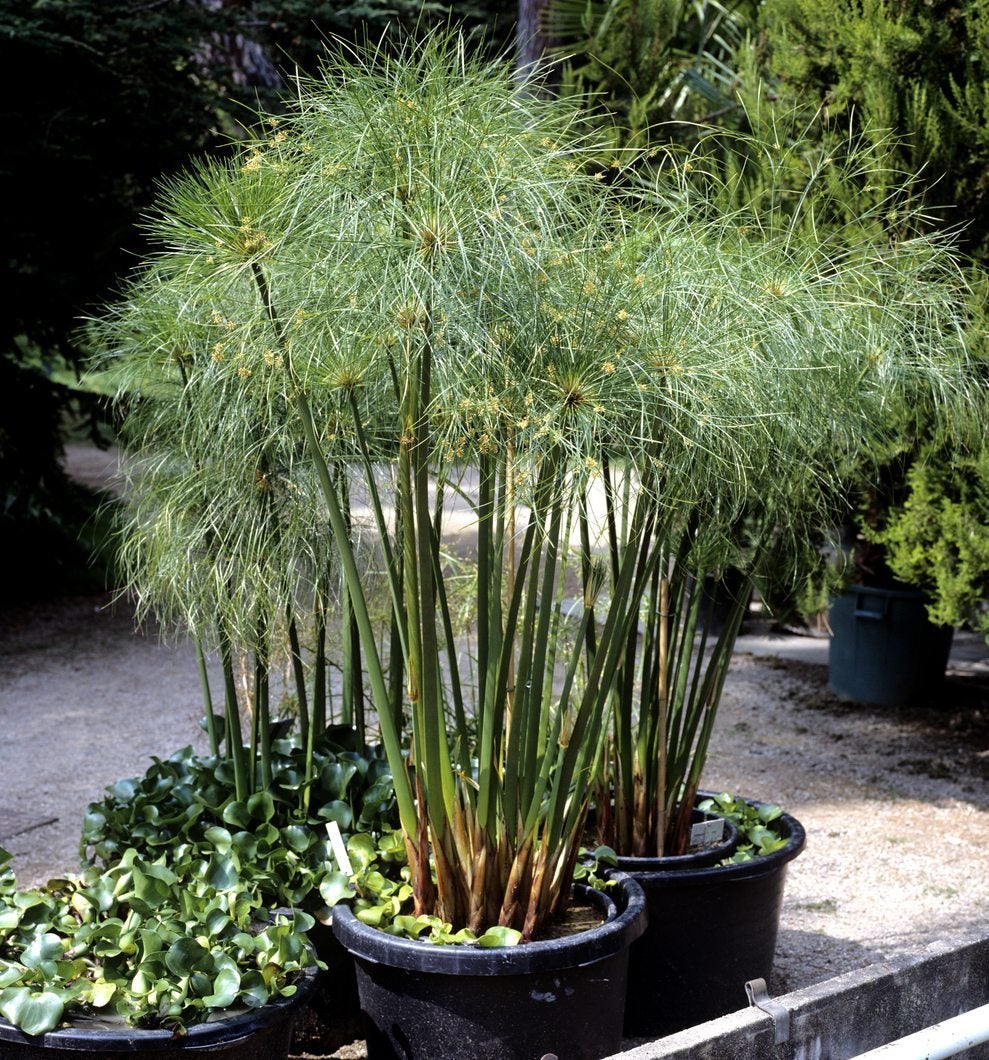Winter Papyrus Care – Tips For Overwintering Papyrus Plants


Papyrus is a vigorous plant suitable for growing in USDA hardiness zones 9 through 11, but overwintering papyrus plants is critical during the winter months in more northern climates. Although papyrus doesn’t demand much effort, the plant will die if subjected to frosty weather. Read on to learn more about winter papyrus care.
Winterizing Cyperus Papyrus
Also known as bulrush, papyrus (Cyperus papyrus) is a dramatic aquatic plant that grows in dense clumps along ponds, swamps, shallow lakes, or slow-moving streams. In its native habitat, papyrus can reach heights of 16 feet (5 m.), but ornamental plants tend to top out at about one-third that height. Cyperus papyrus growing in warmer climates requires little winter care, although plants in zone 9 may die back to the ground and rebound in spring. Be sure the rhizomes are located where they are protected from freezing temperatures. Remove dead growth as it appears throughout the winter.
How to Care for Papyrus in Winter Indoors
Indoor papyrus care during winter is ideal for those living in cooler climates. Be sure to bring your papyrus plant indoors where it will be warm and snug before temperatures in your area fall below 40 degrees F. (4 C.). Overwintering papyrus plants is easy if you can provide sufficient warmth, light, and moisture. Here’s how: Move the plant into a container with a drainage hole in the bottom. Place the container inside a larger, water-filled pot with no drainage hole. A child’s wading pool or a galvanized metal container works well if you have several papyrus plants. Be sure to keep at least a couple of inches (5 cm.) of water in the container at all times. You can also plant papyrus in a regular container filled with potting soil, but you’ll need to water frequently to prevent the soil from drying out. Place the plant in bright sunlight. A south-facing window may provide sufficient light, but you may need to place the plant under a grow light. Papyrus is most likely to survive the winter if room temperatures are maintained between 60 and 65 degrees F. (16-18 C.). The plant may go dormant during the winter, but it will resume normal growth when the weather warms in spring. Withhold fertilizer during the winter months. Return to a regular feeding schedule after you move the plant outdoors in spring.
Gardening tips, videos, info and more delivered right to your inbox!
Sign up for the Gardening Know How newsletter today and receive a free copy of our e-book "How to Grow Delicious Tomatoes".

Nikki Tilley has been gardening for nearly three decades. The former Senior Editor and Archivist of Gardening Know How, Nikki has also authored six gardening books.
-
 Looking For Plants To Give You The Soft And Fuzzies? Try These 5 Fuzzy Leaf Plant Options
Looking For Plants To Give You The Soft And Fuzzies? Try These 5 Fuzzy Leaf Plant OptionsLovers of texture, drama, silver foliage and tactile plants will adore these special sensory garden additions. These fuzzy leaf plant options will leave you all aglow
By Susan Albert
-
 Get Ready For A Summer Of Hummers! Grow These Full Sun Hummingbird Plants and Flowers
Get Ready For A Summer Of Hummers! Grow These Full Sun Hummingbird Plants and FlowersIf you’re lucky enough to enjoy a sunny backyard, make sure you are maxing out on your pollinator opportunities and grow these full sun hummingbird plants and flowers
By Tonya Barnett
